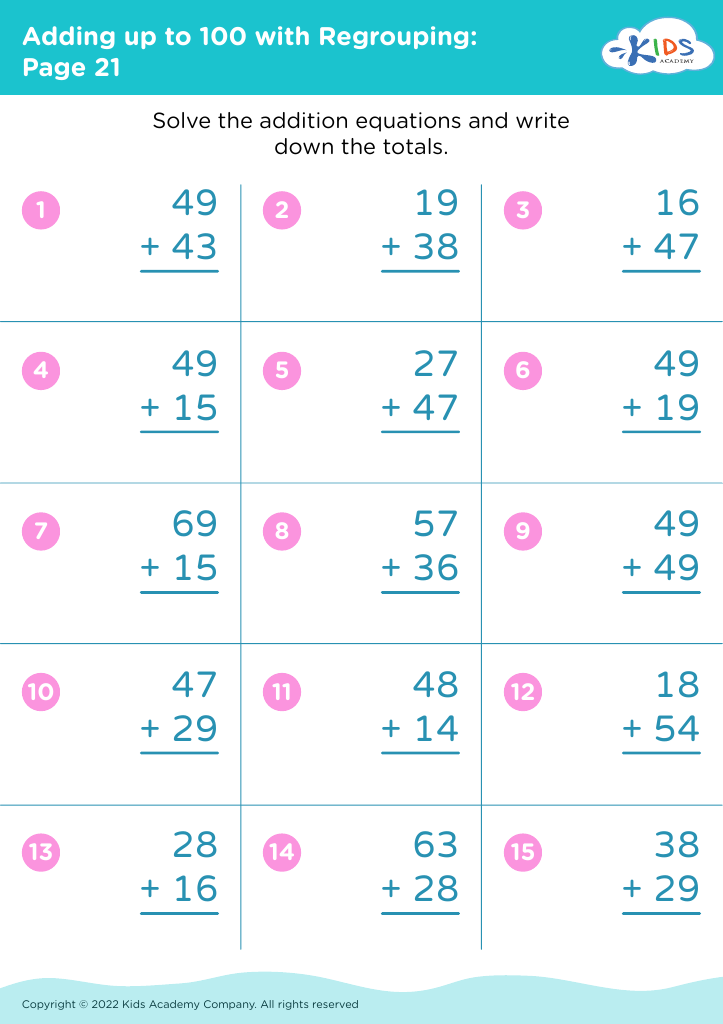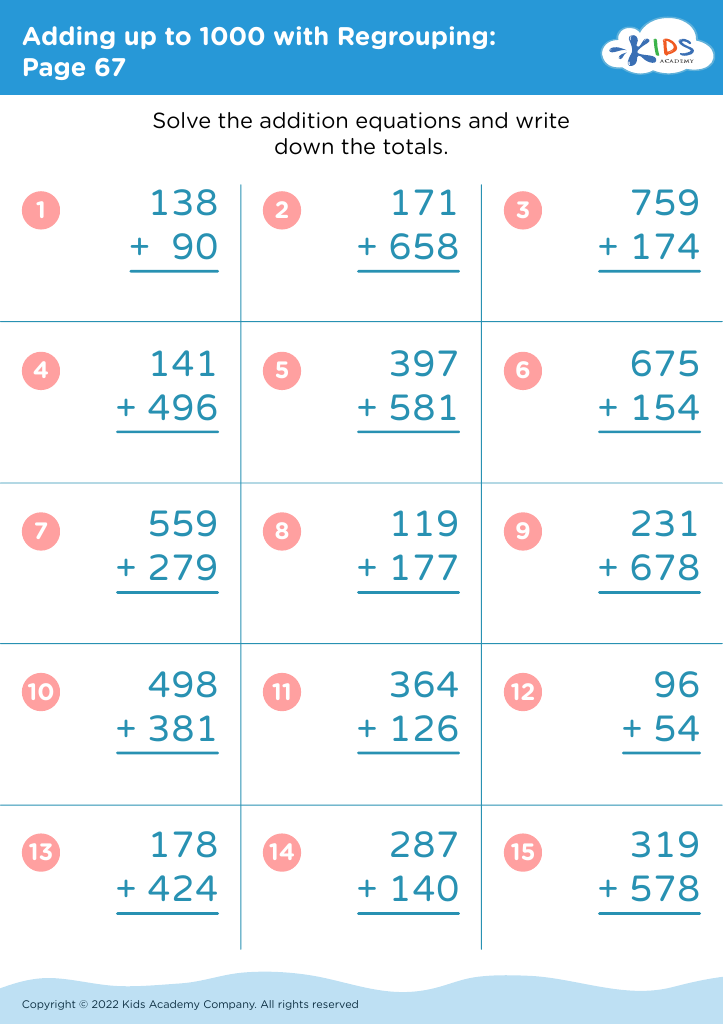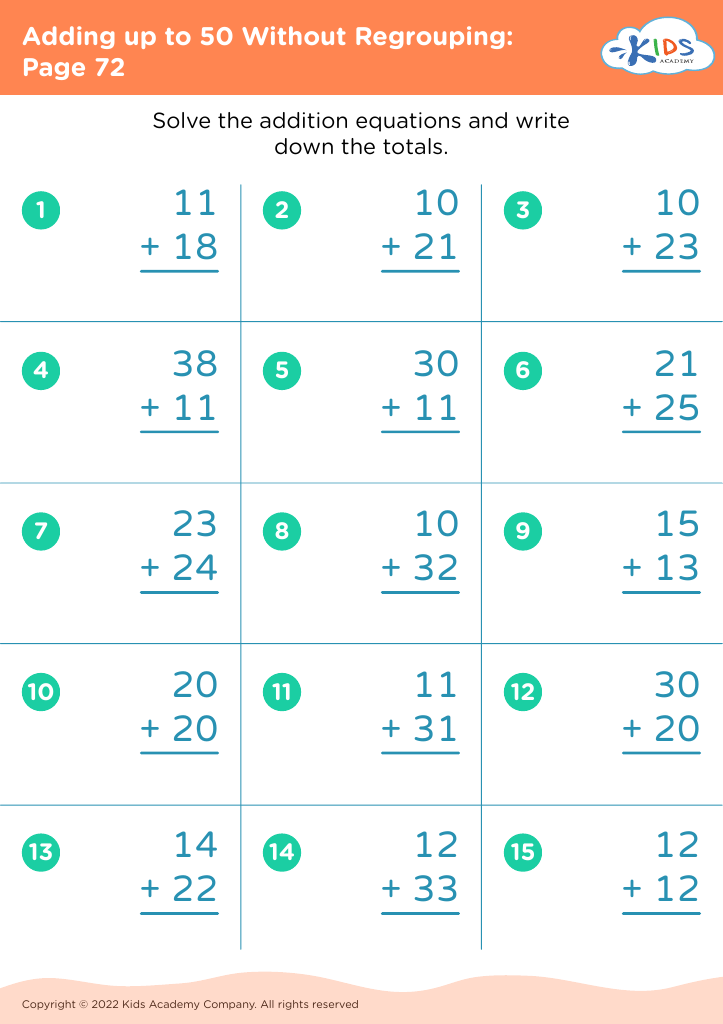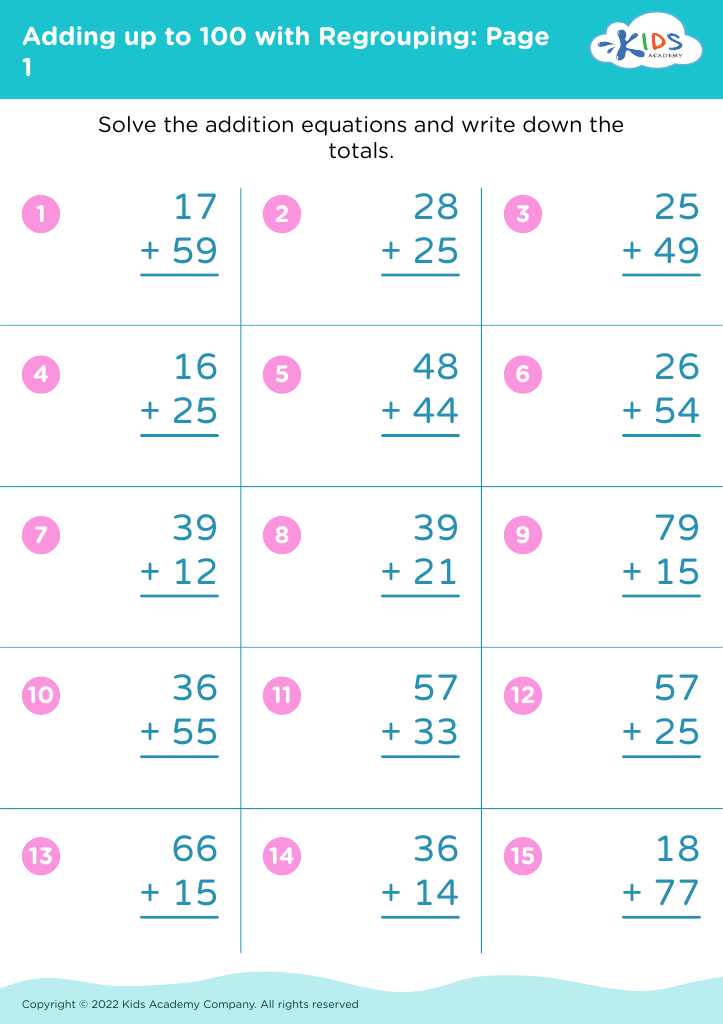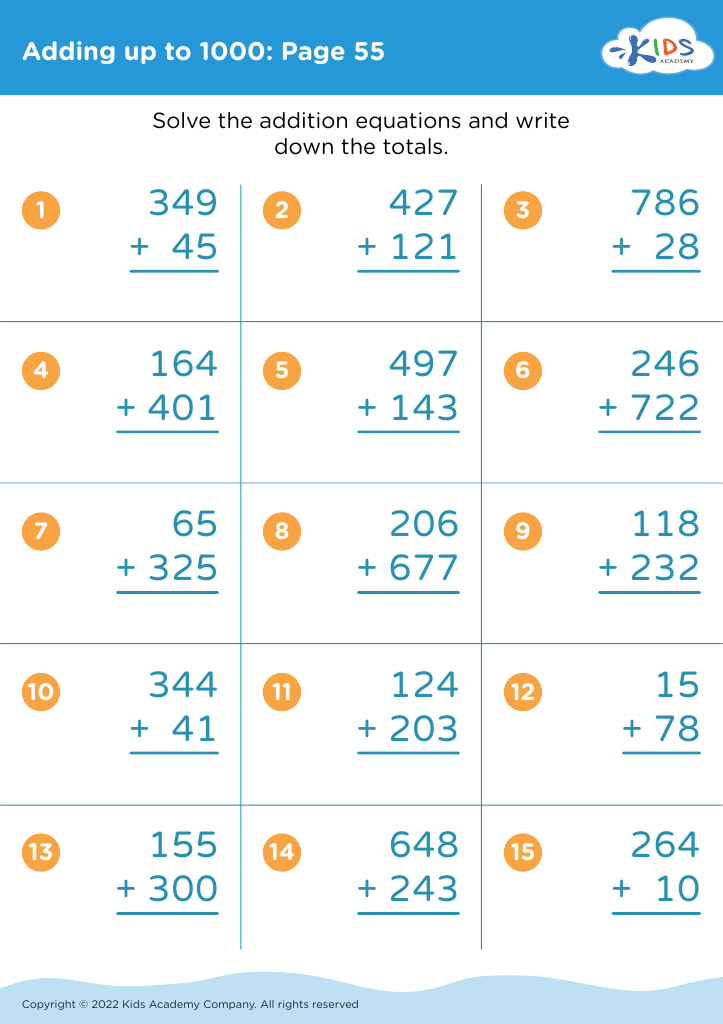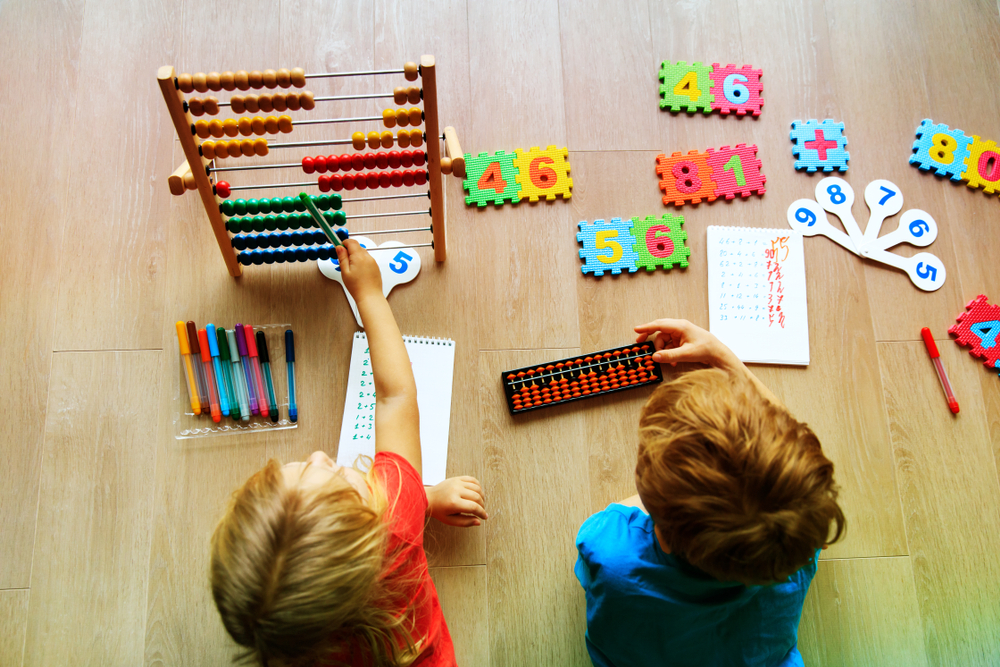Logical thinking development Worksheets for 8-Year-Olds
15 filtered results
-
From - To
Boost your child's critical thinking skills with our "Logical Thinking Development Worksheets for 8-Year-Olds"! Designed to engage young minds, these worksheets challenge children to solve puzzles, identify patterns, and develop reasoning abilities in a fun and interactive way. Each resource encourages creativity while enhancing problem-solving techniques. Perfect for classroom settings or at-home learning, our worksheets cater to various learning styles and promote independent thinking. Help your 8-year-old master essential logical skills, preparing them for future academic success. Explore our collection and watch their confidence soar as they tackle exciting activities that make learning enjoyable and rewarding!
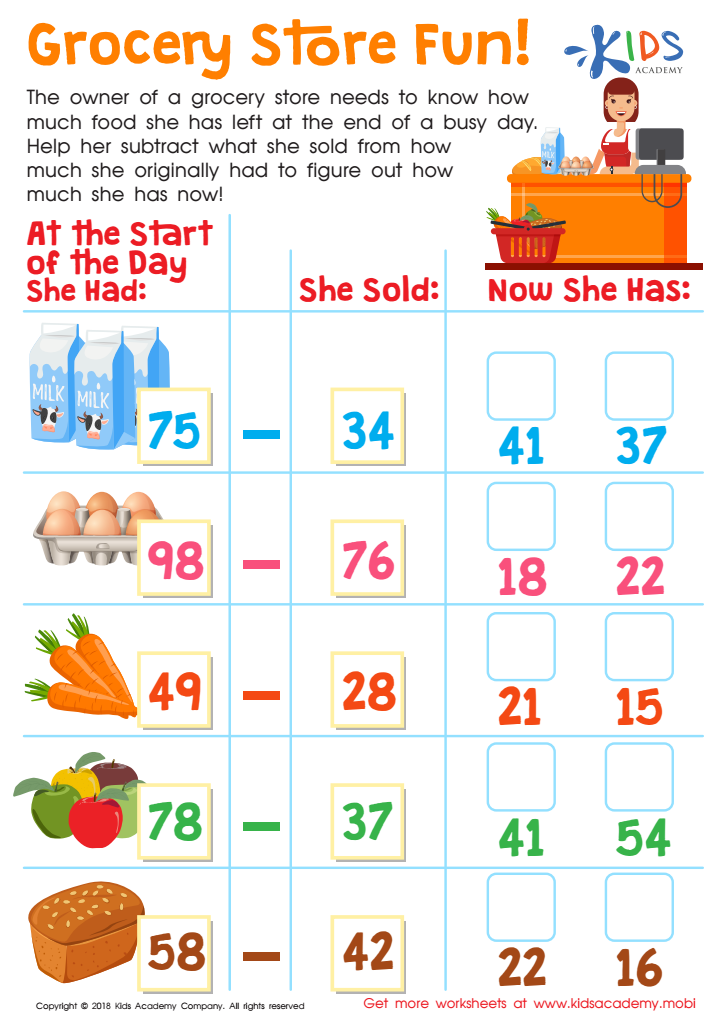

Grocery Store Fun! Worksheet
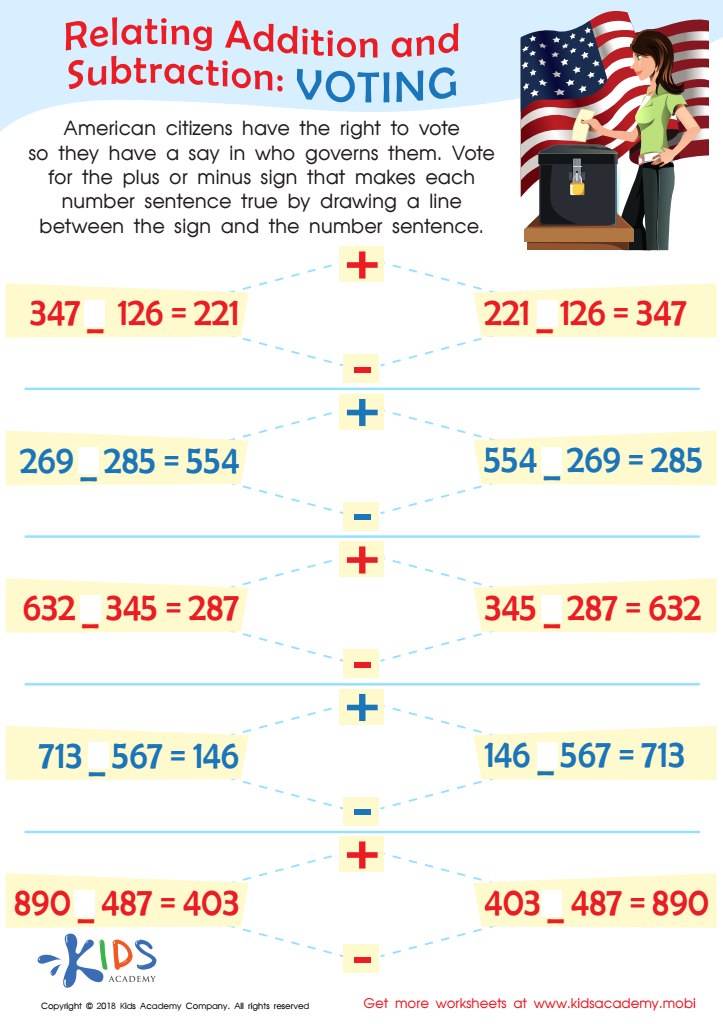

Voting Worksheet
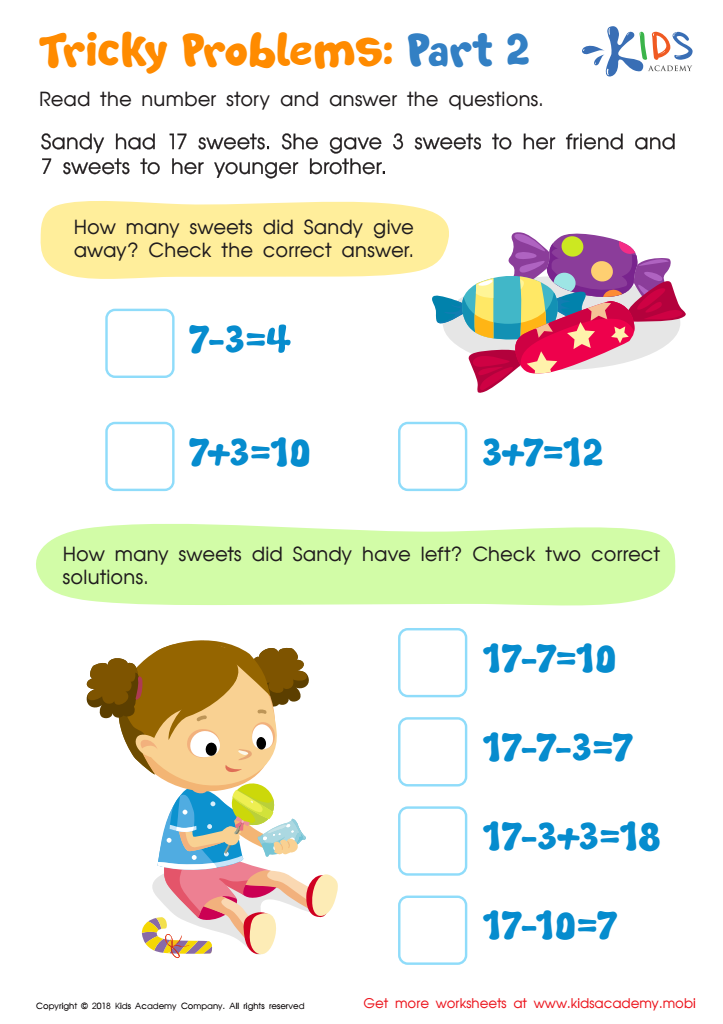

Tricky Problems Worksheet: Part 2
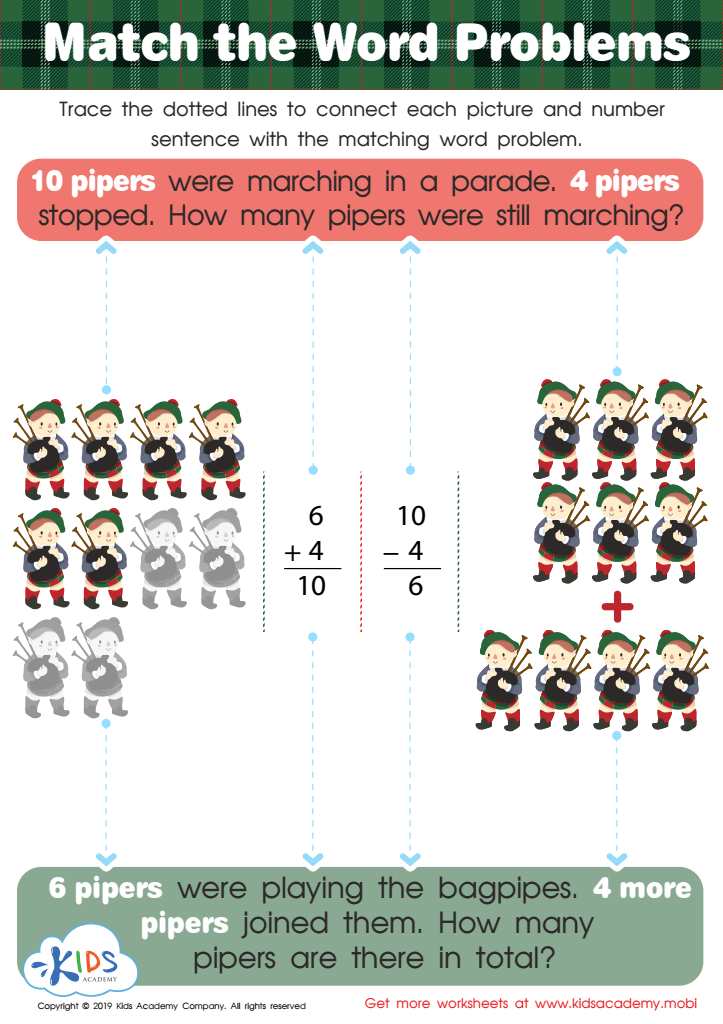

Match the Word Problems Worksheet
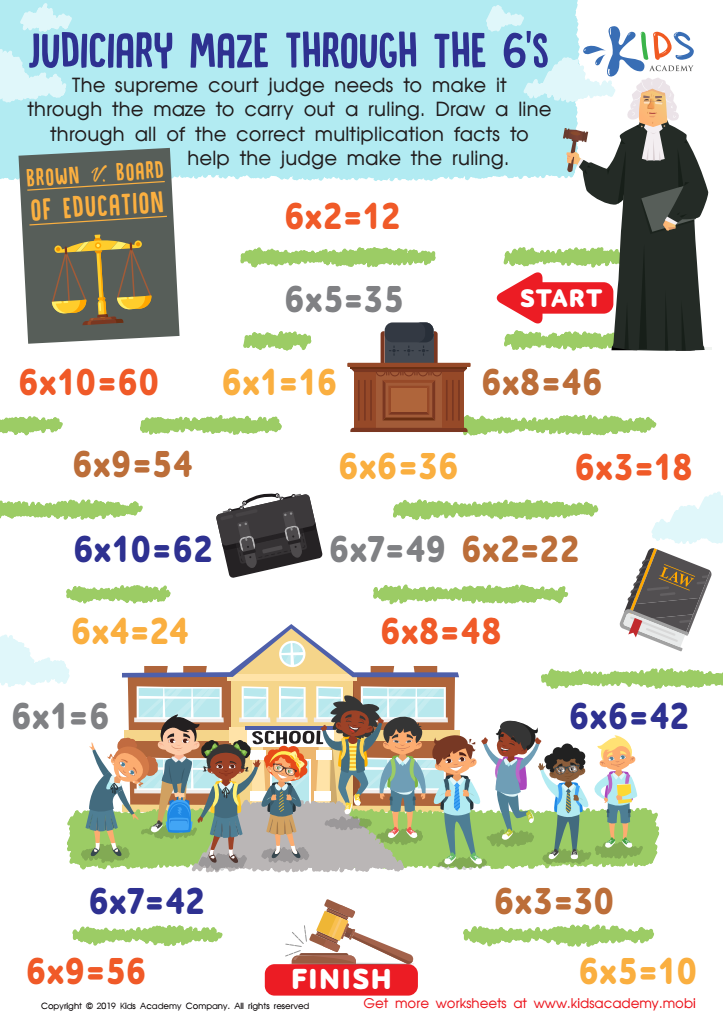

Judiciary Maze Through The 6’s Worksheet
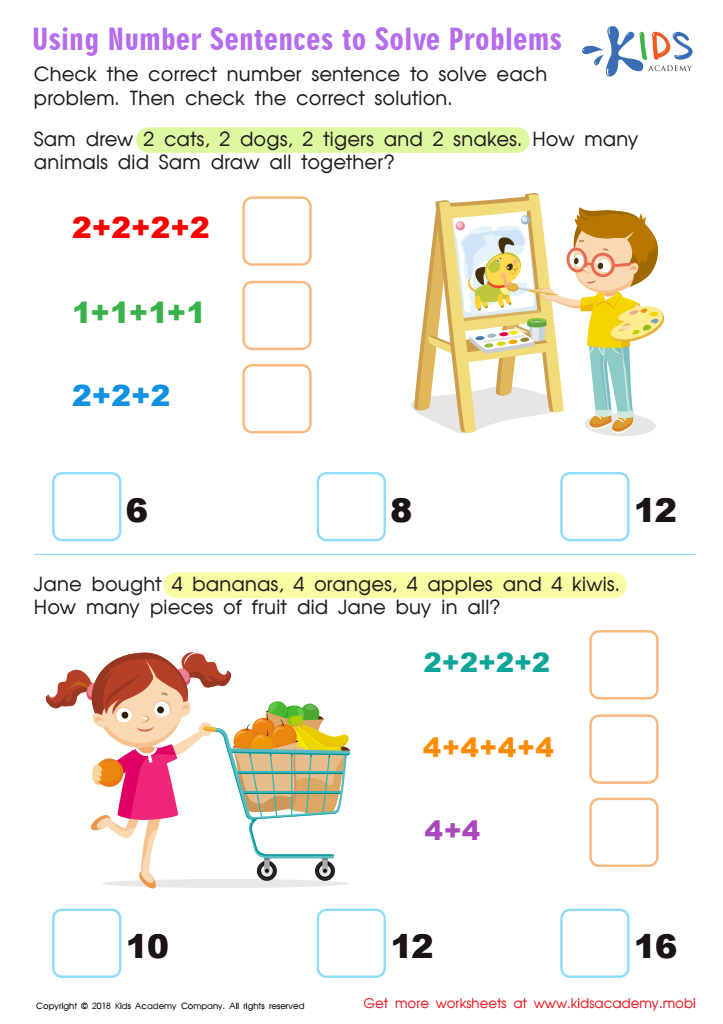

Using Number Sentences to Solve Problems Worksheet
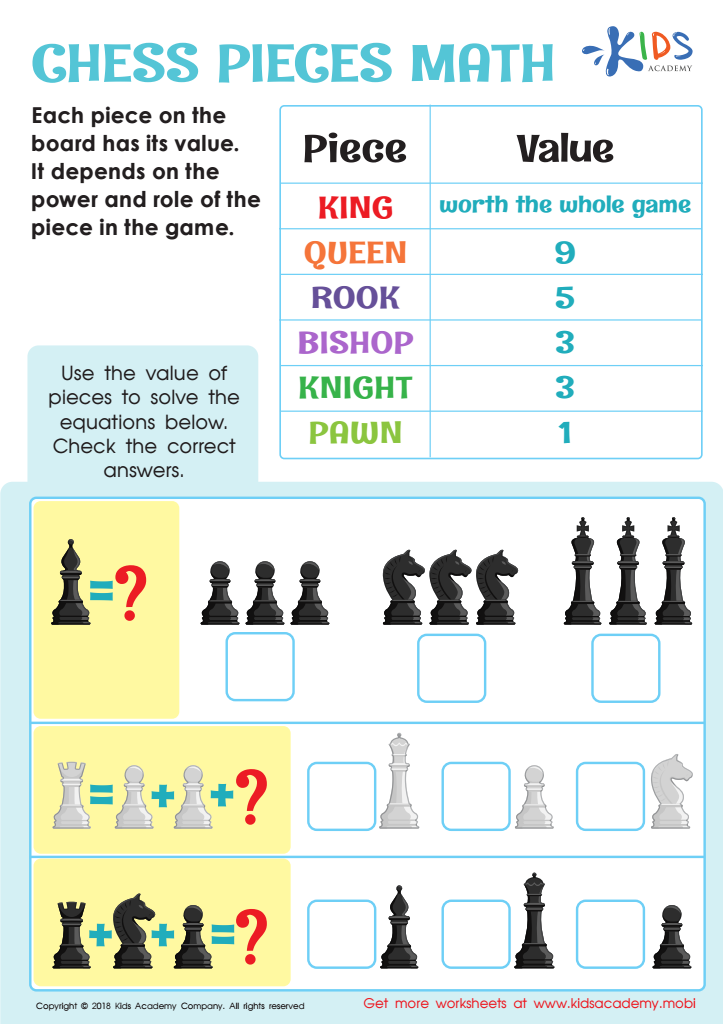

Chess Pieces Math Worksheet
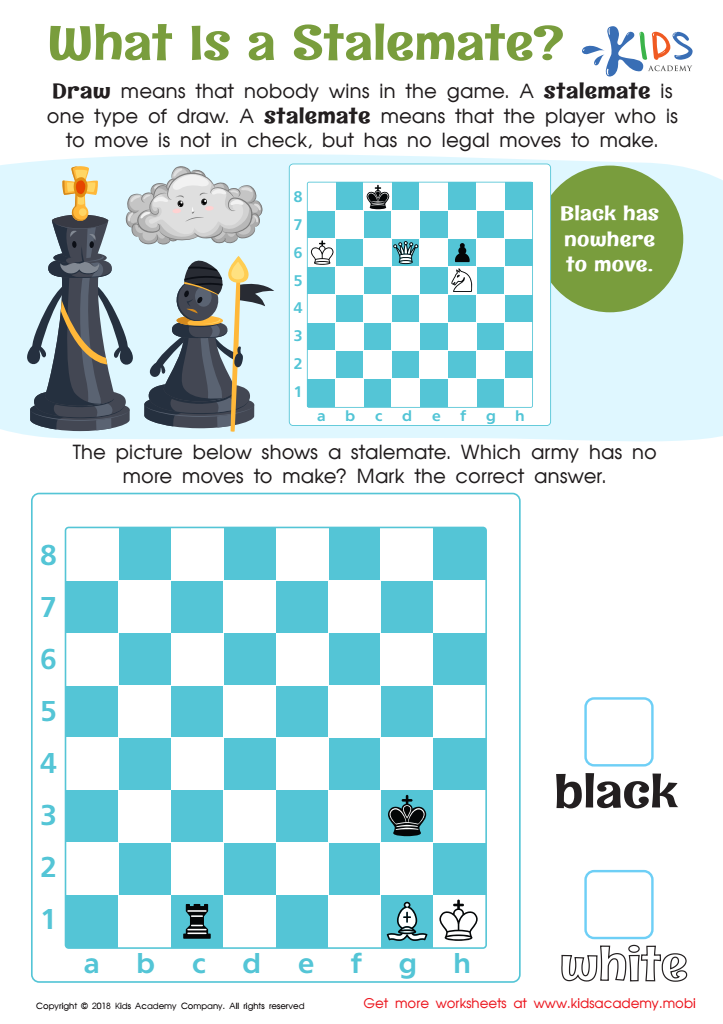

What Is a Stalemate? Worksheet
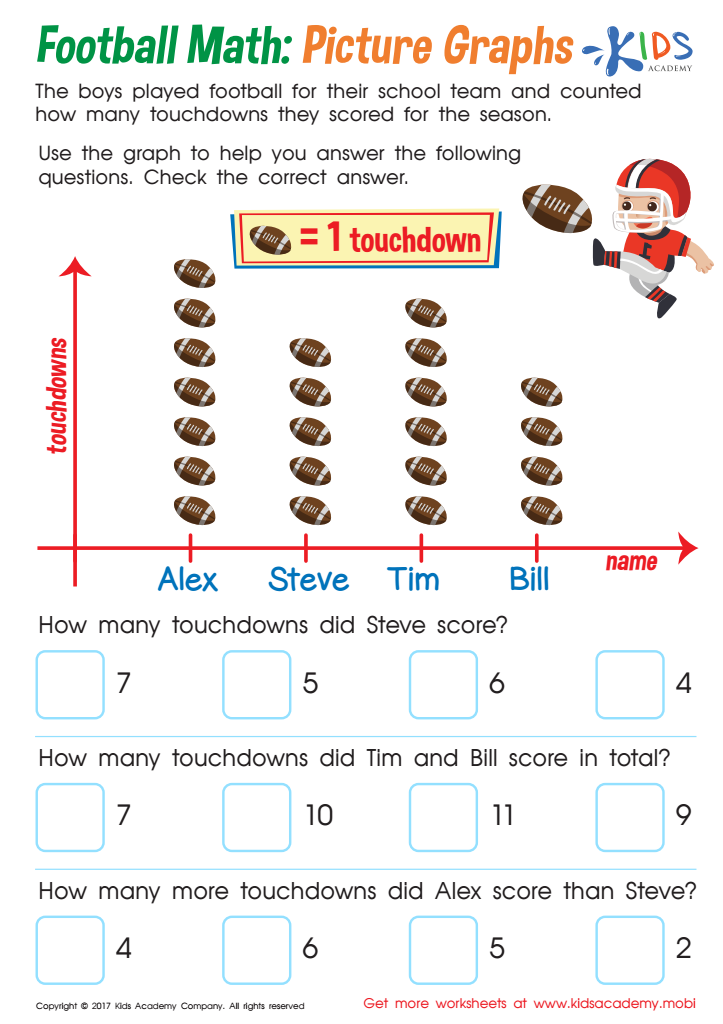

Football Math Worksheet
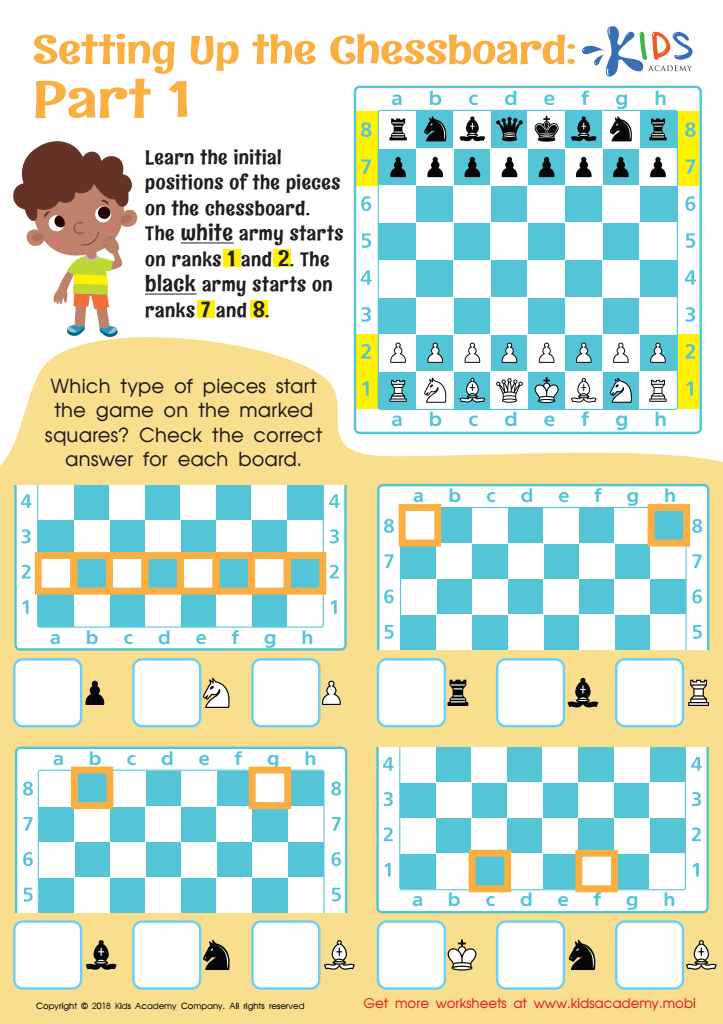

Setting up the Chessboard: Part 1 Worksheet
Logical thinking is a crucial skill for 8-year-olds, laying the foundation for academic success and everyday problem-solving. At this age, children begin to think more abstractly and make connections between concepts, making it an ideal time to nurture their logical reasoning abilities. Parents and teachers play a vital role in this developmental phase.
Firstly, logical thinking enhances children's ability to analyze situations, evaluate outcomes, and make informed decisions. This skill is beneficial not only in subjects like math and science but also in social interactions and emotional understanding. When children learn to approach problems logically, they become better equipped to deal with challenges, such as resolving conflicts with peers or understanding complex narratives in reading.
Moreover, fostering logical thinking supports critical thinking skills that are essential for lifelong learning. In a rapidly changing world, the ability to approach issues from a logical standpoint enables children to adapt, innovate, and think independently.
Encouraging activities such as puzzles, games, and open-ended questioning can significantly boost logical thinking skills. By investing time and resources in this aspect of development, parents and teachers help children build confidence in their reasoning abilities, setting them up for success in school and beyond.

 Assign to My Students
Assign to My Students
